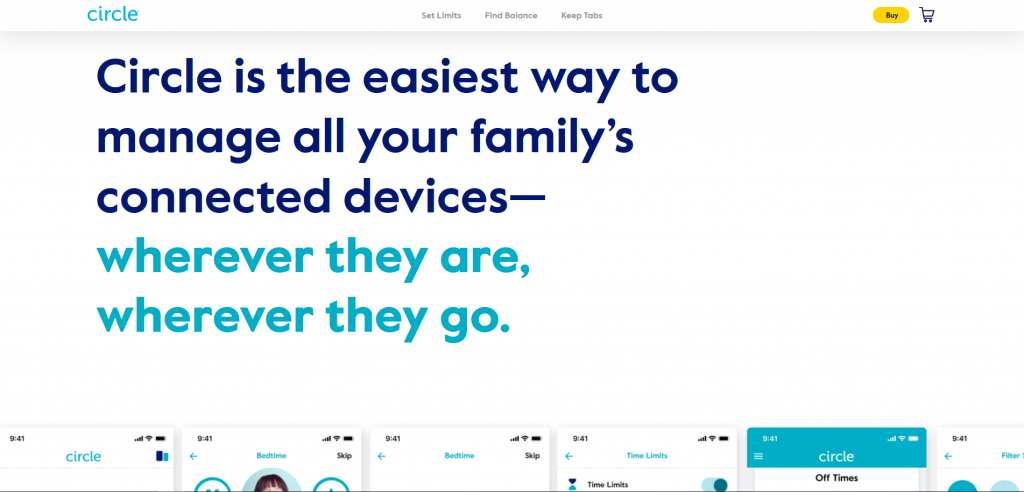My 10-year-old niece was recently gifted with her dad’s old smartphone. While it doesn’t have phone service, it sure is WiFi enabled – as evidenced by the 10 selfies she posted to Snapchat just an hour ago.
It seems as if all her classmates have similar privileges as they are also constantly posting to social media. Attempting to be a responsible aunt, I re-joined Snapchat and started following her. Soon after, I received a notification recommending that I follow two other people. They were the names of her 10-year-old friends that I had never personally met. My niece’s privacy settings were as strong as possible on the app, but I don’t know if the same can be said for her friends. I wasn’t even sure if the strongest privacy settings would stop her name from popping up on other people’s accounts as friend recommendations.

Because of my profession, I’m hyper aware of the various dangers posed to children online from the mundane cyber bullies to the unthinkable child predators. So, encountering this kind of uncertainty about my niece’s online identity was unacceptable to me and I started thinking about the steps we, her family, could take to keep her safe.
Parents and caregivers: follow these steps to keep your child safe online now and as they grow.
Know the Access Points and Stay Informed
What devices does your child have access to? Technology is ever evolving and we live in an age where children are often the first to gain access to new technology. Stay informed on any new device that you bring into the house. Keep in mind, any WiFi-enabled device or product is a potential doorway to your child. Phones and computers are obvious, but many parents forget that modern game consoles include chat room abilities that have video and voice functionality. Games popular with kids, like Minecraft and Fortnite, are easy targets for predators and cyber bullies.
Once you are aware of all the doorways, it’s time to follow the next tip to keep your child safe online.
Be the Gate Keeper
The devices your child has access to and the ones you allow them to use will probably depend greatly on age. However, it’s safe to assume that by the time they hit grade school, they’re at least using a computer. One of the most important things you can do to keep your child safe online is to be a literal gate keeper to the internet and set boundaries for when, where, and how long they can access the internet. This could mean no phones in the bedroom, keeping the family computer and game consoles in communal spaces, and limiting total time spent on the devices. Many devices are even equipped to automatically shut down once the child has exceeded their time allotted.
You may even consider using something like Circle with Disney to manage all your WiFi connected devices from the network level.

It’s one thing to manage internet access by limiting device usage, but the smartest thing you could do is to manage it by talking to your child.
Set the Rules and Be Clear About Them
Depending on age, let your child know what your expectations are for their internet usage. Don’t shy away from hard subjects such as pornography, online bullying, and child predators. Kids might adhere to your rules better if they understand the why behind them. “Because I said so” is rarely a foolproof argument. Explaining the why allows them to think about the potential dangers in the moment and trusts that they will make good decisions.
Always communicate with your child about internet safety the way you would about safety in the real world.
Don’t talk to strangers
Encourage your child to stay out of chat rooms and to always let an adult know when someone reaches out to them. Find an age-appropriate way to explain that people who want something from you will say and do anything to get it. Teach your child about red flags to watch out for, like someone asking for personal information.
Don’t give out personal information
Encourage your child to ask “why?” and to trust their instincts. They may know not to give out their home address but might give out their school district without a second thought. We can’t be with our children all the time and it’s better to help them learn to make good judgments on their own.
No photo uploads or downloads without permission
This is a good opportunity to explain the permanence of online identity and how difficult it is to truly delete anything from the internet. Even a photo uploaded to an app like Snapchat, where posts vanish after 24 hours, can still be screen capped. Another more concerning tactic by predators is to obtain an incriminating photo of your child and then use it to blackmail for more.
Did you know that Snapchat posts vanish? Or if your child is even on Snapchat? Keep reading to be sure.
Know Your Child’s Online Profiles (and trust them)
The same way that you track your own online profiles, you should track your child’s. You should follow your child whenever possible on social media and, depending on age, have access to their accounts. However, always let them know that you have access and will only access them with their knowledge. A big part of keeping your child safe online is establishing trust, and that goes both ways. Child predators often prey on the idea that children are trying to establish an identity apart from their parents.
If you show your child that you trust them, then they are less likely to hide suspicious messages from strangers.
Speaking of social media profiles, it may be a good time to look at your own…
Your Social Media Profiles are a Liability
What you put onto the internet lasts forever – there is no true delete option when it comes to your internet profile. Give your child agency over their online identity as soon as you can – like getting their approval before you post a picture of them to your own social media profiles. Remember that what you post online can give strangers a view into your child’s life, such as posting about your child’s school events, where and when you vacation, etc. Seemingly innocent anecdotes can be used to convince a child that a stranger is really a friend.

Now, this isn’t meant to be alarmist, as these are extreme examples of how social media could be used against you or your family. The best thing you can do is check your privacy settings and keep them as strong as possible. And maybe think twice before you let everyone know that you’ll be on vacation for the next two weeks.
Bonus Tip – Model Healthy Behavior
All technology should be considered a tool. Do you think your child spends a lot of time staring at a screen? Consider how much time you might spend doing the same thing. Don’t want your child to have their phone in their room? Make it a house rule to keep phones in a central location away from bedrooms.
Each family is unique and must decide for themselves what works best. You know your child best and you know what works best for them and your family.
There are even more ways to protect your child online, but these five tips are the easiest and quickest ways to get you started. If you enjoyed this article, check out the first two posts in this three-part series, 3 Ways to Protect Your Tech Before It’s Stolen and 5 Ways to Protect Your Internet of Things.

written by
Ashley Cloud
June 18, 2019
Stay informed with industry-relevant emails curated by our team of experts.
We send out emails once or twice a month relating to IP Services, industry news, and events we'll be attending so you can meet our experts in person.

Ashley Cloud
Ashley Cloud is a Senior Criminal Compliance Specialist at IP Services, Inc. She has a decade of experience on the Privacy and Compliance team and previously supported the Brand Protection team. She graduated from Edinboro University with a bachelor's degree in Painting and Printmaking. She works at IP Services' Erie location.



